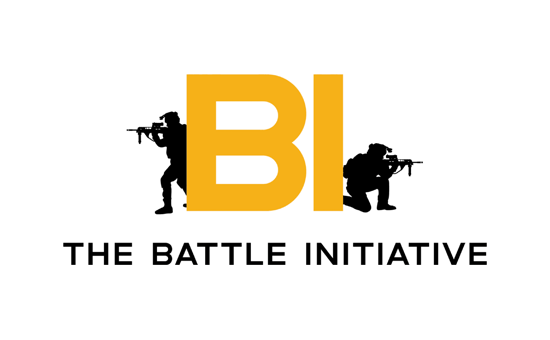Self-Defence vs. Contact Sparring: Understanding the Differences, Strengths, and Limitations
By Sifu Pablo Cardenas, a direct disciple in the Ip Man – GM William Cheung lineage
When it comes to martial arts, it’s easy to assume that all training is created equal. Many people conflate self-defence training with contact sparring or competitive combat sports. While both involve fighting, their purposes, methods, and outcomes are fundamentally different. Misunderstanding these differences isn’t just an academic issue—it can have real-world consequences for your safety and the safety of those around you.
At United Martial Arts & Fitness (UMF), we specialise in preparing our students for real-life scenarios while also providing world-class sparring and combat sports training. Our academy is the only school in Townsville licensed to deliver our industry-leading character development and real-world self-defence curriculum, combining practical skill, situational awareness, and physical readiness in one comprehensive program.
This article explores the differences between self-defence and contact sparring, their strengths and weaknesses, and why a balanced approach makes UMF the premier choice for anyone serious about personal safety.
Purpose and Approach: Why Self-Defence Is Different from Sparring
Self-defence prepares students for unpredictable, high-risk situations where the goal is safety, not points. Real-world threats rarely follow rules, involve referees, or happen under controlled conditions. Training in self-defence develops:
- Situational awareness: recognising threats before they escalate.
- De-escalation techniques: using verbal and non-verbal communication to avoid confrontation.
- Effective neutralisation skills: controlling distance, escaping, or incapacitating an aggressor if necessary.
For example, imagine walking home late at night and noticing someone following you. Practical self-defence skills—awareness, movement, and assertive verbal commands—can prevent a confrontation entirely. These skills are rarely emphasised in combat sport training.
Contact sparring and competitive combat sports, by contrast, focus on controlled, rule-bound competition. Boxing, kickboxing, MMA, and similar sports teach timing, speed, endurance, and technique—but always within a defined framework. Both athletes know the rules, the duration, and that referees monitor the fight.
While sparring develops reflexes, toughness, and technical precision, these skills may not always transfer to the unpredictable environment of real-world threats. A single attacker, multiple attackers, weapons, uneven surfaces, or emotional stress can render techniques practiced in a ring ineffective if the practitioner isn’t trained to adapt.
Strengths and Weaknesses of Self-Defence vs. Combat Sports
Understanding the strengths and limitations of each training style is essential to avoid gaps in real-world safety.
Self-Defence
Strengths:
- Real-world application for unpredictable situations.
- Adaptable techniques designed for efficiency and survival.
- Development of life-saving decision-making and situational awareness.
Weaknesses:
- Limited exposure to full-resistance physical sparring.
- Lower emphasis on prolonged endurance and technical refinement under competitive stress.
Combat Sports / Sparring
Strengths:
- High-level technical skill development.
- Physical conditioning, endurance, and reaction training.
- Mental toughness and resilience under controlled stress.
Weaknesses:
- Reliance on rules and predictable scenarios that may not exist in street encounters.
- Techniques may fail against unstructured attacks, multiple attackers, or weapons.
Example: A kickboxer may habitually throw high kicks during sparring, but in a real street attack, a low grab or a sweep could leave them vulnerable. Without real-world adaptation, sparring skills alone can give a false sense of security.
Analogies for Better Understanding
To illustrate the differences:
- Car vs. Off-Road Vehicle: Combat sports are like a sports car—fast, precise, and excellent on smooth tracks (the ring). Self-defence is like a 4x4—not as flashy, but designed for rough, unpredictable terrain where control and adaptability matter most.
- Fire Drill vs. Real Fire: Sparring is like a fire drill—it simulates stress in a controlled environment. Self-defence is like responding to a real fire—you must act under real danger with no rules. Survival depends on applied knowledge, not just practice.
- Chess vs. Street Fight: Combat sports are like a chess game with predictable moves. Self-defence is like playing a game where rules change constantly—you must think quickly, adapt, and protect yourself and others immediately.
These analogies help clarify why self-defence is not “just another martial arts skill” but a lifesaving competency that every individual can benefit from.
Practical Insight: Common Training Gaps
Many combat sport enthusiasts lose sight of what their training doesn’t teach. Techniques that excel in competition can fail in the real world. Overconfidence can increase risk, especially when facing:
- Multiple attackers
- Weapons or improvised objects
- Crowded or uneven environments
- High-stress situations that trigger fight-or-flight responses
Conversely, someone trained solely in self-defence without exposure to sparring or resistance may lack:
- Physical conditioning for real struggle
- Timing and reflex development under pressure
- Confidence in applying techniques against a resisting opponent
UMF’s programs address both sides of this equation. Our students train in:
- High-resistance scenarios to replicate real attacks.
- Sparring sessions to build timing, reflexes, and resilience.
- Practical self-defence drills for unpredictable real-life encounters.
This integrated approach ensures students are prepared for both controlled competition and chaotic real-world threats.
The Balanced Approach: Why UMF Stands Apart
At UMF, we don’t just teach martial arts—we teach mastery of personal safety. Our approach integrates:
- Self-defence skills: situational awareness, threat neutralisation, escape strategies
- Contact sparring: reaction training, endurance, and technical precision
- Character development: discipline, respect, and confidence, critical for making sound decisions under pressure
Together, these elements create well-rounded practitioners who:
- Know when to fight and when to avoid conflict
- Can apply techniques safely under stress
- Build confidence that reduces risk before physical confrontation ever occurs
UMF is more than a martial arts academy. We are a community committed to real-world safety, the only school in Townsville licensed to deliver our character development-based self-defence curriculum, making us the #1 choice for parents, teens, and adults who value skill, safety, and integrity.
Real-World Applications: Why Training Beyond Sport Matters
Consider these scenarios:
- Scenario 1: A teenager walking home notices suspicious individuals. Awareness and verbal assertiveness prevent escalation—skills taught in UMF’s youth programs.
- Scenario 2: An adult is confronted by an aggressive person in a parking lot. Practical self-defence techniques, distance control, and quick decision-making ensure safe exit.
- Scenario 3: A parent or guardian applies de-escalation and situational control to protect children in a crowded public space.
These scenarios highlight that martial arts is not just about sport or competition—it’s about real protection and life-saving skills.
Conclusion: Combat Sports Sharpen Tools; Self-Defence Teaches How to Use Them
Combat sports refine your technique, speed, and resilience. Self-defence teaches you when, why, and how to apply those skills safely and effectively. Neglecting one for the other leaves gaps that can compromise safety.
At UMF, we provide:
- Paid trial classes with special bonuses
- Free trial classes (excludes paid trial specials)
- Programs for kids, teens, and adults focusing on both sparring and practical self-defence
- A community that supports discipline, respect, and commitment
Don’t compromise on quality when your life—or the life of your child—depends on it. Enrol today and gain the confidence, skill, and awareness that comes from training with Townsville’s most trusted martial arts and self-defence academy.
Learn more or book your trial:
www.umfacademy.com.au
UMF Adult Classes
UMF Kids Classes
Class Pricing


You can trial one of our many classes, book yours today
The best way to see if any of our classes are for you, is to experience it first-hand. See our Academy, meet our instructors and emerge yourself in the UMF culture.
To register for your trial class simply check the class schedule, then click the link below to fill in the registration form.















